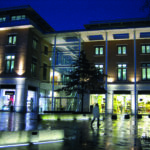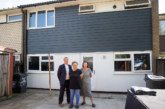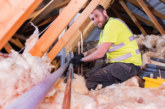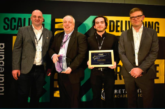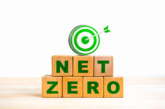Neal Paley, Specialist Lighting Designer at TÜV SÜD, offers advice to local authorities on reducing the carbon footprint of lighting.
A host of voluntary certification and labelling programmes enable the identification of the most energy-efficient lighting products. These regulations and voluntary programmes are being continuously updated to reflect the introduction of new lighting technologies that promise even greater energy efficiency.
Directive 2009/125/EC, also known as the Ecodesign Directive, is the primary regulatory instrument in the European Union (EU) regarding all energy-using products, including lighting products, and it covers more than 40 separate product groups. The Ecodesign Directive is complemented by the Energy Label Regulation, which provides a framework for mandatory labelling requirements and other means of providing end-users with product-specific energy consumption information. Together, these establish minimum efficiency criteria for most major categories of energy-using products.
There is also a vast range of country-specific Green Building rating schemes, each having their own ecolabel. For example, BREEAM (Building Research Establishment Environmental Assessment Method) is the UK’s recognised benchmark for the environmental rating of new and major refurbished buildings. BREEAM helps building developers, local authorities and building owners manage and mitigate risk through demonstrating sustainability performance during planning, design, construction, operation or refurbishment. This helps to lower running costs, maximise returns through the market value of a building, as well as attract and retain tenants by providing desirable places to live and work.

In the UK, Part L of the Building Regulations (England and Wales) contains requirements relating to the conservation of fuel and power, and is a direct outcome of the UK Government’s Energy White Paper. The commitment within this is to raise the energy performance of buildings by limiting heat losses and excessive solar gains, ensuring that energy-efficient fixed building services are installed, and that the local authorities are provided with the information required to maintain their building and its services.
The Waste Electrical and Electronic Equipment (WEEE) Directive 2012/19/EU sets collection, recycling and recovery targets for electronic equipment placed on the market. This has placed obligations upon users and producers to handle their electronic and electrical waste more carefully. Such waste can no longer simply be placed in landfill as targets have been set by the European Parliament for member states to recover certain percentages of their waste via recycling facilities. Lighting plays a key role here, as some manufacturers charge a WEEE levy at the time of purchasing lighting products, which then goes into the recycling scheme.
The right products
In Europe, the CE marking on products such as luminaires, lamps, drivers and other electronic components is a sign of a manufacturer’s or importer’s self-declaration that the product conforms to European requirements. Such a product should come with a Declaration of Conformity that states which standards the product has been tested to. However, CE marking is not in itself a guarantee of quality, but it does offer assurance that minimum demands have been met.
Depending on the outcome of Brexit negotiations, at the time of writing this article, it is likely that UK lighting manufacturers will be required to replace the CE marking with a new ‘UK Conformity Assured’ symbol for the British market. UK lighting manufacturers will still be able to sell products that have been made and assessed against EU regulatory requirements and which carry a CE marking for a certain transition period.
Achieving energy efficiency
Energy efficiency is now a key feature of any lighting design as schemes must meet the latest criteria. However, there are many other important reasons for implementing energy efficient lighting innovations, ranging from the more obvious reduction of power consumption, to benefitting from incredibly low-maintenance requirements and associated costs.
When we work with local authorities, we tend to find that they want to be seen as being ‘green’ so they are more than happy to work closely with you to help ensure they become energy efficient. The simplest way is to replace the dated lighting with LEDs. This helps to bring costs down, from the energy used right through to ongoing tasks such as reducing maintenance cycles.
Implementing energy-efficient lighting into a well-designed scheme can be a complex procedure, as the lighting designer must ensure that efficient luminaires are used. This makes it necessary to think about the design as a whole, both creatively and technically – from the downlight, associated drivers and right through to the lighting control system. Other technical considerations must also be made. For example, not all drivers are fully compatible with every downlight or linear LED, and any dimming may not be smooth when dimming is required, as it could flicker or not dim down to a really low level without a sharp cut off.
However, the design options are endless, as the LED technology evolution is moving so fast. LED light sources are becoming brighter, smaller and more efficient, and double height spaces can now be illuminated to the required lux levels from the smallest of luminaires. Leading lighting manufacturers are also producing ever-improving optical systems for luminaires, which is increasing their efficiency.
Wireless control
Wireless lighting is now also a reality across the commercial and residential sectors and is increasing in popularity. Although Bluetooth is still relatively new in the lighting controls world, its mesh technology brings simple wireless control to large installations. Our familiarity with Bluetooth and the open protocol nature of the technology will mean its entry into the mainstream lighting market is not far off.
With all of these regulatory considerations, product choice variables and other technical considerations that must be made, the design process should be started early within the building development plans. While the introduction of more efficient lighting technologies has resulted in considerable energy savings around the world, new lighting technologies also create ever-changing regulatory compliance challenges for both manufacturers, designers and end-users.
Neal Paley is a Specialist Lighting Designer at TÜV SÜD, an international building services engineering consultancy, specialising in sustainable MEP (mechanical, electrical and public health), BIM (Building Information Modelling), lighting design, and vertical transportation.

